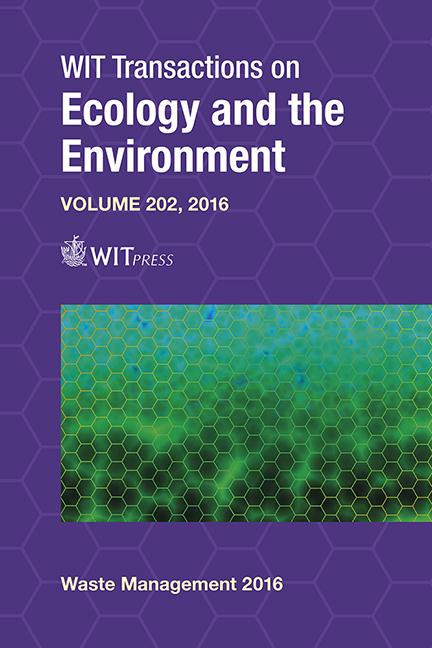A New Procedure For Recovering Heavy Metals In Industrial Wastewater
Price
Free (open access)
Transaction
Volume
202
Pages
12
Page Range
85 - 96
Published
2016
Size
612 kb
Paper DOI
10.2495/WM160091
Copyright
WIT Press
Author(s)
S. Heuss-Aßbichler, M. John, A. L. Huber
Abstract
The usual way to treat heavy metal containing industrial wastewater leads to large amounts of hydroxide sludge. In general, the concentration of the non-ferrous metals in the sludge is too low for an efficient recovery of these elements and in consequence, these secondary raw materials dissipate. New procedures were developed to treat wastewater from traces up to 25 g/l heavy metals like Cu, Ni, Zn, Mn, Pb, Sn, Pd and Ag. Using the modified ferrite process with Fe/M = 2/1 specific products free of hydroxide can be produced. The precipitates are in most cases a mixture of heavy metal ferrite, oxides or zero-valent metal. By reduction of iron ratio, it is also possible to produce doped oxides without by-products. A new treatment method is the so-called Lt-delafossite, with Fe/M = 1/1. The application of the treatment methods for five different rinsing waters from the electroplating industry showed that in each case the recovery rate is higher than 99.9%. A simplified calculation was performed for a Pd activator bath and for three rinsing water loaded with Sn and Pd, Cu or Ni. Referring to a model volume of 1000 l wastewater with weekly exchange, the loss of metal by dissipation per year sums up to approx. 1 ton, based on typical rinsing waters, showing 1.5 g/l to 3 g/l Cu or Ni or rather 15 g/l Cu. Further ecological and commercial benefit of this procedure is the drastic reduction in waste volumes. Additional costs for transport and disposal of the neutralisation sludge can be avoided.
Keywords
heavy metal, Cu, Ni, Pd, Sn, wastewater treatment, ferrite process, Lt-delafossite, recovery potential, nanoparticle





